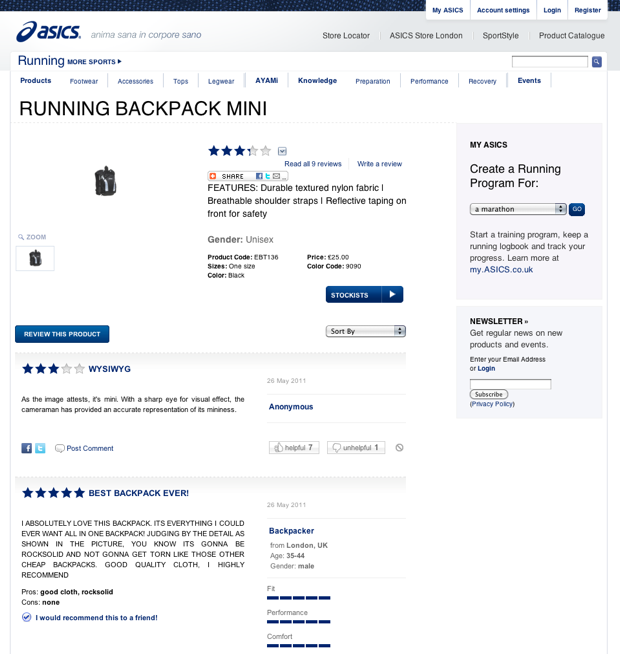As I asked my friends and former colleagues if they knew anyone to replace me, a few of them, currently working in advertising or digital agencies, wondered what it felt like to step over to the “client side”.
Having made the switch myself 3.5 years ago, here are my own observations.
First, I found it immensely rewarding to be actually working on brand strategy, rather than merely applying it in various projects. It’s not a question of control: I don’t own the brand and I am but a simple contributor. But the brand is a living asset and as an employee, I have a personal stake in the debate. Because I work here, the ASICS and Onitsuka Tiger brands are different, however microscopically — an influence no vendor can claim to have, however large and valuable their contribution.
Another benefit comes from the longer-term involvement: I get to work on projects all the way from the moment they’re first conceived, through their development and actual implementation, all the way until the activity stops. I feel this gives more opportunities to learn, and it brings the satisfaction of being proven right (or wrong!) by the reality of operations.
Next, a bitter-sweet pleasure: we are primarily answerable to consumers. Of course I have a boss, who has one too, who answers to the company’s board, who pays the salaries. But in the end, each in our role, we are all evaluated by consumers, who are the ultimate judges of our success, and actually foot the bill. Working for intermediaries is not a problem, but I truly appreciate the proximity and brutal honesty of this relation to the people.
At times, I’ve found it frustrating to be kept out of the agencies’ creative process and to be exposed to work only at identified checkpoints. In my previous job as account manager I always felt attracted to the creative team for the exact same reason, but once on the client side it got worse. It’s bearable when presentations kick ass and clear progress is made on a regular basis, but it’s an agony when the agencies struggle a bit.
For me, the least attractive part of the job is having to scavenge budgets. In every project, one of my main roles is to ensure it’s funded appropriately. There actually is significant creativity to this task: accounting rules are fairly sophisticated and rather interesting, and the political aspects can make it a fun game to play, honestly. However, it quickly feels repetitive, and the day-to-day practice is tedious. (Also, I am terrible at negotiating and do not enjoy it at all.)
Job perks are smaller, or at least less aligned with my own aspirations. I really miss the funky, well-appointed, city-center office, and I definitely have way more bureaucracy in my life. On the other hand, my previous employers didn’t fly me in business class either, and with ASICS I’ve been granted the rare honor to run amazing races. Mileage will vary wildly there, just make sure you negotiate your terms properly!
Finally, the people: you meet great and not-so-great people in every job. In agencies, there is perhaps a higher proportion of extraordinary people, because extraordinary is a good advertisement for what the agency sells. But there can also be a higher proportion of ego and short-term mentality, of which I have seen less on the client side. Also, I’ve seen a bit more variety of backgrounds and attitudes here. Win some, lose some, for me it’s a toss-up on this point.
Overall, I feel the switch was overwhelmingly positive. But of course it may very well have to do with the particular “client” I joined… Want a job at ASICS?


ASICS as a platform
Recently, a Google employee called Steve Yegge posted a very long message about a few things his former employer, Amazon, does better than Google. It was intended to be an internal message, not something public, and he therefore made statements he probably would have avoided otherwise. But he published it to the whole world by mistake, and the quality of his observations ensured instant popularity for his post.
Yegge’s key point is that Amazon approaches its business with the ambition of building a platform, while Google is focused on the development of individual (and discrete) products. And the problem with this approach is that very few people, in computing, have ever been very good at reliably predicting what products consumers want. Many companies create a couple of very popular products, but very few can reproduce this outside of their initial business, or maintain that business in the face of changing conditions.
Working for a manufacturer of physical products, I could not help but wonder how we stack up, however distant software development may seem.
Continue reading →